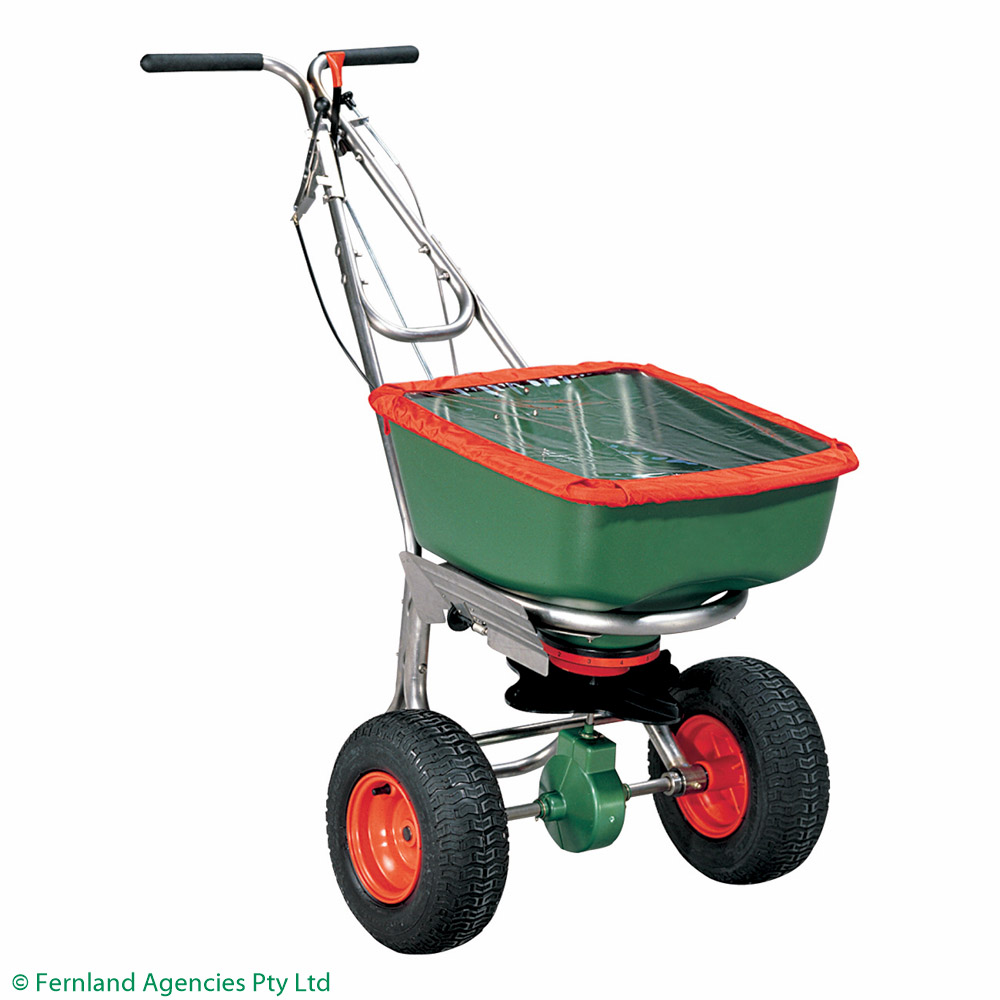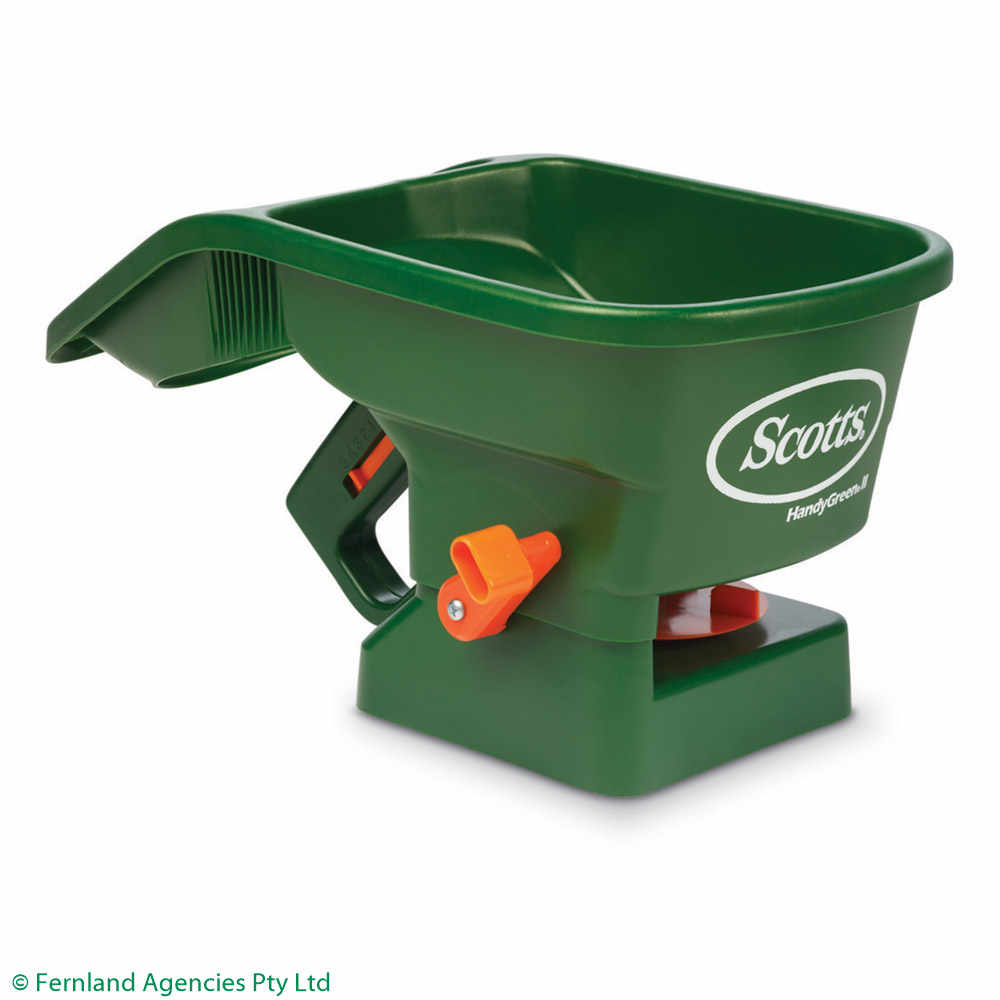
Different Types of Lawn Spreaders: Pros, Cons & Uses
Posted by Mark Kelly @ yardcaregurus.com on 15th Sep 2021
Choosing the right lawn spreader – and using it correctly – will make lawn maintenance easier and more enjoyable. Whether your plan is to improve an existing lawn or to seed brand-new areas, selecting the right spreader will help you to get the most out of your seed or fertilizer investment and your efforts. Today, we'll be looking at the three most popular types of lawn spreaders – broadcast, drop, and hand-held – and their uses, pros, and cons.
What to keep in mind when choosing a lawn spreader
Whatever your project is, it's essential to match the right spreader to your lawn. Keep the following facts in mind before choosing a spreader:
- The shape and overall size of your lawn, including corners, lines, or curves
- The number of obstacles, like stones, garden beds, and seeds
- What are your time constraints, and what degree of precision are you looking for?
Broadcast spreaders
A broadcast spreader scatters seeds over a large area in a fan-like pattern. Various passes back and forth are necessary to overlap seed, since seed distribution thins out the further it is from the spreader. A general rule of thumb is if the arc of your broadcast spreader is approximately 365 cm across at its furthermost points, then your actual coverage is about 275 cm wide. Every pass across your lawn should be about 275 cm apart. Set your spreader at about 50%, and use a crosshatch pattern to spread the seeds.
A broadcast spreader can be push-type, hand-held, or pull-behind. It is, in the opinion of many, the most versatile spreader for dry fertilizer. Fertilizer drops onto a rotating wheel or spinner that can throw and distribute your fertilizer pellets evenly over a large area.
Broadcast Spreader Pros:
- Best for covering large areas of lawn efficiently
- Very time efficient – broadcast spreaders cover a lot more ground in a lot less time
Broadcast Spreader Cons:
- Seeds can be scattered outside of the intended area – there's less precision around obstacles and tight spots
- The lighter the spreader, the more they're affected by wind, and more operator skill is needed to get complete uniform coverage
Drop spreaders
Drop spreaders are gravity-fed and drop seeds straight downward in neat rows with a great deal of accuracy. Your spread width is the distance between your 2 furthermost hopper holes. You'll need to overlap your wheel paths every time you pass across your lawn since the seed only drops directly between the wheels. Drop spreaders are best for smaller yards (anything under about 1500 square meters). Set your drop spreader at 50%, and make sure to spread the seeds 2 ways, using a crosshatch pattern. Make sure that your spreader is set to the OFF setting before filling it, and fill it over an easily cleanable surface in case of spillage.
Drop spreaders were the first spreaders utilized in the application of dry granular fertilizers. Care should be taken not to apply too much fertilizer in one area since green stripes might appear on your turf, or you could even burn the grass.
Drop Spreader Pros:
- Easy to use and control, and they're not affected by normal winds
- Precision is possible around obstacles and in tight spots since your seeds will be kept in bounds, making any cleanup unnecessary
Drop Spreader Cons:
- There's a danger of stripping if you don't overlap your wheel paths
- It will take more time to spread seeds since each pass covers less ground
Hand-held Spreaders
Hand-held spreaders are ideal for those lawns that are too small for even the smallest of push mowers. They are equipped with multiple spreader type settings, are usually rustproof, and are dependable season after season. Only hold your spreader over a hard surface like pavement when you're filling it so any spilled product can be swept up. Adjust your spreader's selector settings, pull the trigger, and start walking at an average pace while turning the crank counter-clockwise.
Hand-Held Spreader Pros:
- Can hold approximately 300 square meters of grass seed or fertilizer
- Provides even dispersal and is simple to use
Hand-Held Spreader Cons:
- Hand-held spreaders frequently suffer from lower quality manufacture than either pull or push spreaders
- Has a smaller hopper which requires more refills
Choosing the Right Spreader for Lawn Success
Choosing the right spreader for your lawn care needs takes some careful consideration. Keep in mind the size and shape of your lawn, any obstacles, your time constraints, and the precision required. Broadcast spreaders are best for large, open areas and allow you to cover ground quickly. Drop spreaders provide more accuracy around obstacles but cover less area per pass. Handheld spreaders are convenient for very small lawns. With an understanding of the pros and cons of each type, you can select the spreader that will serve your unique lawn the best and make your seeding or fertilizing project easier and more successful.
Browse Our Range of Quality Spreaders
We offer a wide selection of high-quality broadcast, drop, and handheld spreaders to meet all lawn care needs and budgets. Browse our online range to find the ideal spreader to get your lawn off to the healthiest start this season. Taking the time to match the right tool to the job will ensure you get the most out of your efforts and investment.
With thanks to Mark Kelly from Yard Care Gurus for this informative article.
